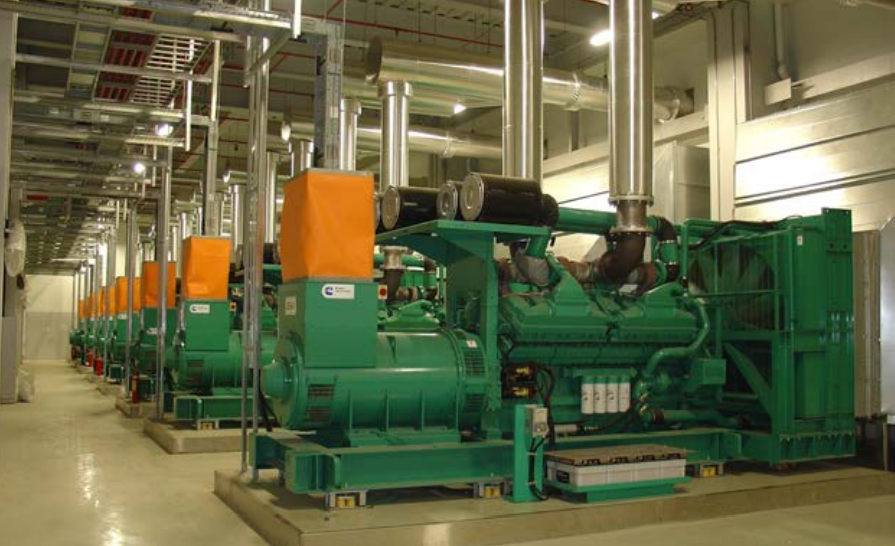1. Basic Requirements
As a general principle, any generator can be paralleled with any other, provided the voltage and frequency match at the point of interconnection. However, there are practical limitations to this rule. When reliability and performance are critical, a system designer may need to replace existing generator sets if their compatibility with newer equipment cannot be confirmed, or if the cost of upgrading the older units to meet compatibility requirements is not justified. This article offers guidance on key issues to consider and approaches for addressing common challenges.
Successful paralleling of generators, even when dissimilar, requires:
- Voltage Matching: Terminal voltages must align within ±5% amplitude and ±5° phase angle.
- Frequency Matching: Frequency difference must be within ±0.2 Hz before breaker closure.
- Phase Sequence: Identical phase rotation between all machines.
- Droop/Control Coordination: Governor and AVR droop settings must be properly adjusted.
- Short Circuit Withstand Capability: Protection systems and breakers must handle possible faults.
Dissimilar generators require enhanced control system coordination and careful protection planning.
2. Common Issues with Dissimilar Generators
| Issue | Cause | Impact |
|---|---|---|
| Load Sharing Instability | Differing governor/AVR characteristics | Oscillations, load hunting |
| Reverse Power or Motoring | Small unit overloaded by larger unit | Prime mover damage |
| Voltage Instability | Mismatched excitation systems | Poor voltage regulation |
| Protection Misoperation | Different settings or response times | Unwanted trips |
| Efficiency Loss | Suboptimal load distribution | Increased operational cost |
| Grid Code Non-compliance | Lack of coordinated support | Penalties or disconnection |
3. Compatibility Considerations
Mechanical/Prime Mover:
- Different inertia and dynamic responses (e.g., diesel vs. gas engines).
Electrical:
- Varying generator ratings and voltage limits.
- Different AVR and governor designs and characteristics.
Control/Communication:
- Synchronizers and load sharing controllers must accommodate multiple machine types.
- Communication protocols must be harmonized (e.g., Modbus, CAN, proprietary).
4. Load Sharing Between Dissimilar Units
Active Power (kW) Sharing:
- Governed by prime mover speed control.
- Droop settings must be coordinated to achieve stable proportional sharing.
Reactive Power (kVAR) Sharing:
- Managed through excitation system (AVR) droop or bus voltage control.
- Mismatched settings can cause overheating or instability.
Typical Setup:
- Larger generator typically acts as the master (grid-forming).
- Smaller generators operate in droop mode, following the voltage/frequency of the master.
5. Best Practices
- Pre-Commissioning Tests:
- Test each generator's AVR and governor individually.
- Verify paralleling under no-load, partial load, and full-load conditions.
- Load Share Adjustments:
- Tune governors for active power sharing.
- Adjust AVR droop for reactive power sharing.
- Protection Coordination:
- Implement reverse power protection for smaller units.
- Set frequency and voltage protection based on system stability margins.
- Real-time Monitoring:
- Monitor kW, kVAR, PF, frequency, and voltage continuously.
- Set alarms for abnormal conditions (e.g., load imbalance, out-of-step).
6. Practical Example
When paralleling a 2.5 MW diesel generator (1500 rpm) with a 1.0 MW gas generator (1800 rpm):
- The diesel has higher inertia; gas engine reacts faster.
- Governor tuning is critical to prevent oscillations.
- AVR settings must be coordinated for reactive load sharing.
- Reverse power protection is essential for the smaller gas unit.
7. Summary Table: Key Considerations
| Aspect | Check | Mitigation |
| Voltage/Frequency/Phase | Match before synchronizing | Auto-synchronizer system |
| Governor Types | Compatible modes (droop/isochronous) | Governor tuning |
| AVR Response | Match droop/boost response | Excitation system adjustment |
| Load Sharing | Proportional sharing | Load share controllers |
| Protection | Accurate settings | Reverse power, differential, out-of-step relays |
